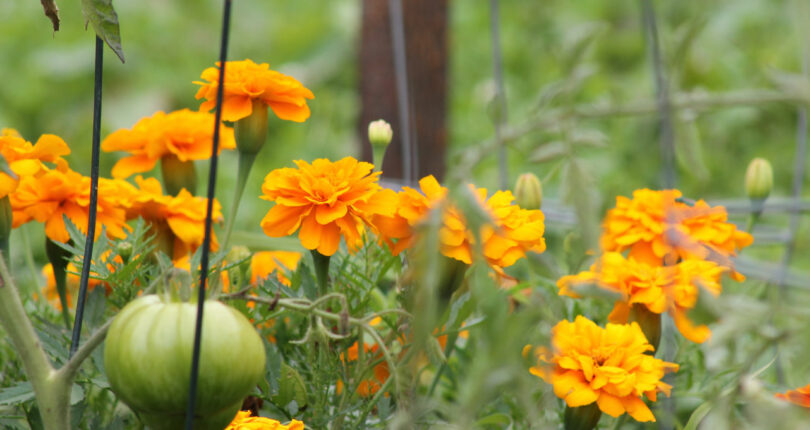What gardener doesn’t envision flower beds bursting with an explosion of color or harvests so bountiful they’ll feed the entire neighborhood? Focusing on our garden’s potential is a powerful motivator. It’s more inspiring than dwelling on the possibility of leaves being ravaged by insects, plant stems cut to the ground overnight, flower buds withering before they blossom, or fruit spotted with boreholes before ripening. Discovering an insect invasion can be devastating.
Garden pests can’t be avoided completely, but they can be managed with careful planning — and planting. I’m among those who consider companion planting the first line of defense for chemical-free pest deterrence. Companion planting is the practice of growing two different plants in proximity for the benefit of one or both plants. Although pest deterrence may be the priority, other benefits include attracting beneficial insects, improving soil fertility, boosting growth, and suppressing weeds.
Tomato, basil, and parsley are natural companions in both the kitchen and garden. Basil repels insects such as thrips and disorients moths that lay tomato hornworms. Basil and parsley both attract beneficial insects, which protect the plant, and bees, which pollinate tomato flowers, adding to the tomato’s flavor.
Chives, oregano, and spring onions have insect repellent properties against mites, moths, and aphids; sage is a deterrent to cabbage moths. These plants are often used as companions to broccoli and lettuce. Aphid infestations can severely reduce vegetable harvests.
Fortunately, aphids are repelled by many odors, including garlic, mint, and dill. Plant garlic as a companion to potatoes, lettuce, cabbage, and fruit trees. Garlic also repels onion flies, ermine moths, and Japanese beetles. Mint deters ants and flea beetles. Although mint is an aggressive grower, it can be controlled by planting in pots placed strategically around the garden. Dill deters spider mites and attracts beneficial ladybugs.
Sunflowers pair well with cucumbers and pole beans. They provide support for climbing plants. They also provide shade for crops that are susceptible to sun stress and are more prone to insect damage during hot summer months.
Other flower companions include marigolds, zinnias, nasturtium, alyssum, and tansy. The scent of marigolds, grown close to onions, reduces the onion maggot fly’s ability to lay eggs. Nasturtiums grown close to kale, cabbage, and broccoli lure hungry caterpillars away. Alyssum lures aphid-eating hoverflies away from fruit trees. Tansy attracts pest-eating ladybugs and predatory wasps. It also repels cutworm, making it ideal to plant with asparagus, beans, cabbage, carrots, celery, corn, lettuce, peas, peppers, potatoes, and tomatoes.
There are many companion planting charts available online. I suggest exploring a reliable source, such as your extension service, Farmers’ Almanac, or well-known garden supplier, since a lot of data is based on observation rather than hard science.
Master gardener Vicki Spencer has an eclectic background in conservation, water, natural resources, and more.

